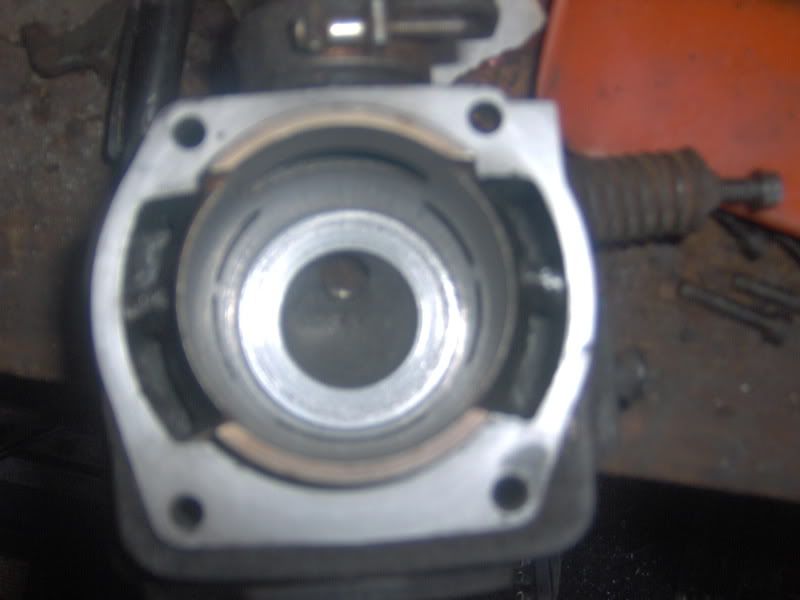romeo
Addicted to ArboristSite
I will agree that .020 is a safe number to shoot for. I have ran as low as .013 without smashing a piston into the combustion chamber and adding .007 to that gets you safe due to different discrepancies.

hang on Mr.
in post #8 you said "For saws without a custom combustion chamber, i.e. two piece heads........
the squish does not mean much."
then in post #13 you said "I said that it doesn't matter much for a stock 288 head. It comes into greater play with a custom combustion chamber"
now post 8 seems to contradict post 13????
what am i missing?
cheers, Serg
I don't know what you are doing on mods that lowers thermal efficiency, but the way I am working at it I make every effort to turn heat into motive power and in that shoot for high thermal efficency.
The chart does not have anything to do with the effect of turbulence on output, it has to do with the squish velocity, and when it occurs.
You saw will be finished in 2-3 weeks!
HAHAHAHA
That's definately a good one. Wait that's me right now.
Fred

I really think you should "delve into the matter further" and demonstrate to everyone just exactly where TW's flawed figures are, and with which you insinuate he is attempting to "steer" the conversation from. I think that exercise should be most entertaining!
When did we ring your bell Sweetheart? We all know that math isn't your strongpoint.
I'll go ahead and take the lumps. I assumed the charts were backing up TW's figures and didn't look at them close enough. The normal progression of a discussion is to state one's opinion and then back it up. My bad on that one.
I disagree with two assumptions in particular.
1) Increase of power output is linearly related to an increase of cut speed.
2) Increased compression will affect all saws the same. We must assume that these calculations are also linear or subject to some arbitrary exception. Combustion chamber configuration seems to not play a part in his calculations either.
Fred
Over-complicating things is an inherent trait of humans in modern society. At the same time however, some of the biggest problems I've seen with modified saws were from lack of forethought or planning.
Where I come from, both of those quotes say the same thing. The quotes are inverse, but not opposite. Sorry if that is confusing to you, it was not meant to be.
Fred
He is saying that the squish height means little compared to the combustion chamber area. If all saws had the same dish in the top it would matter but they don't. This 372 head has .025 squish but it builds around 197 lbs of compression. I wish the pic came out cleaner, but I'm not going to pull it apart to take another one.

is the high compression because the squish band is wide and the combustion chamber is small so all the gas is getting cramed into a smaller space?
if so i could achive this buy milling the squish band wider and dropping the jug down to compensate, while still maintaining the same squish.... forget what happens to timing of ports im just talking top end here.
cheers, Serg
Enter your email address to join: